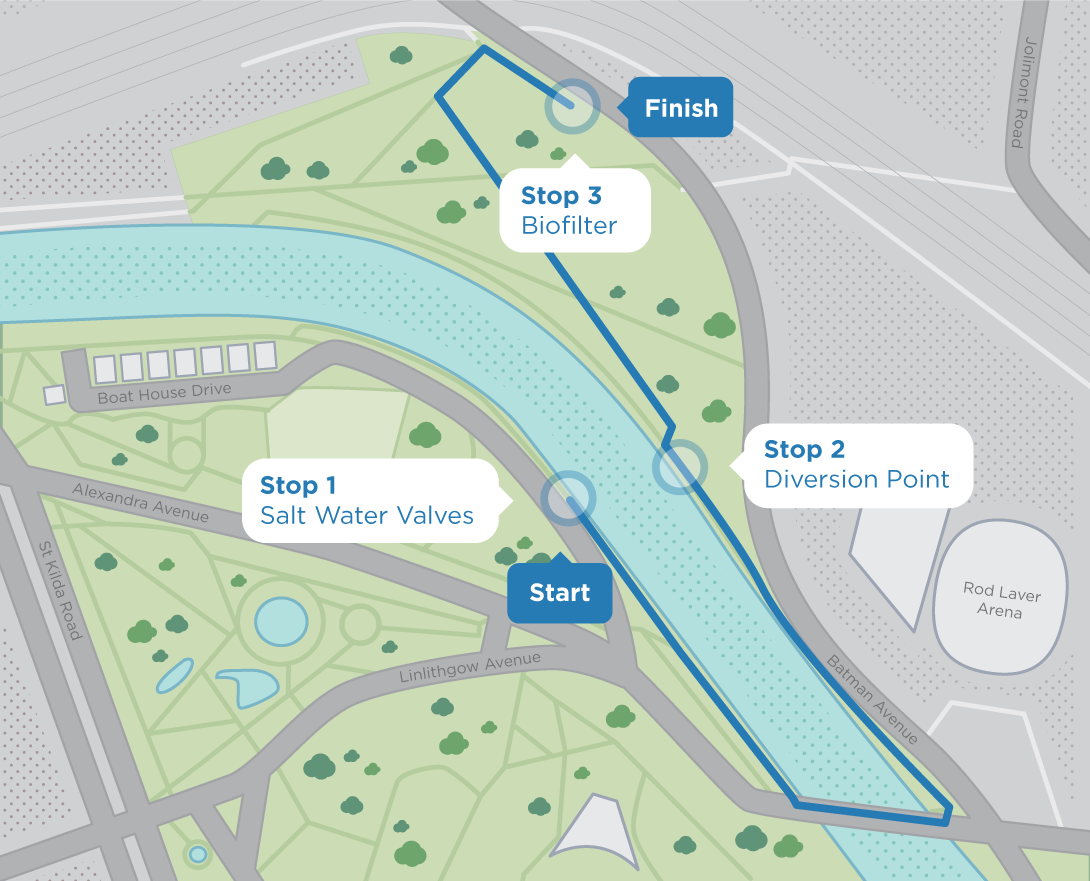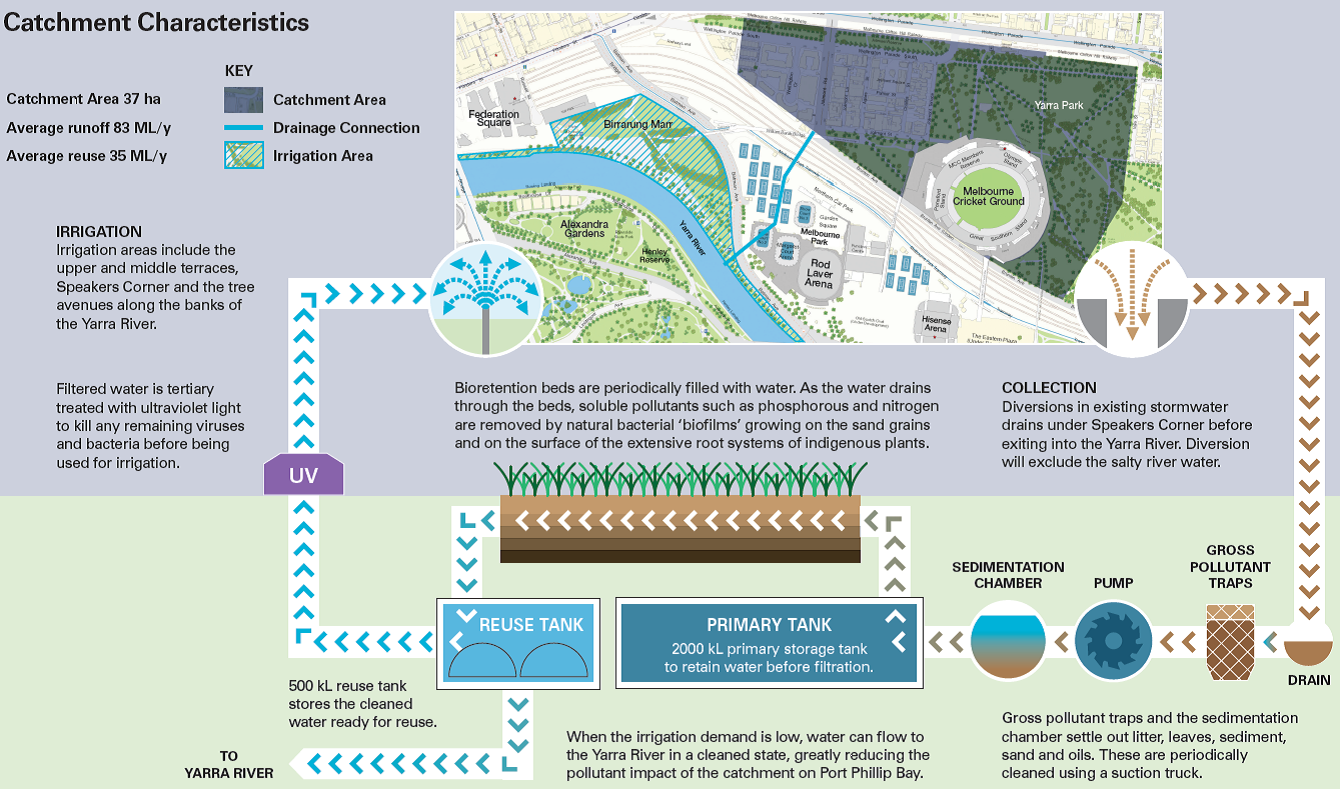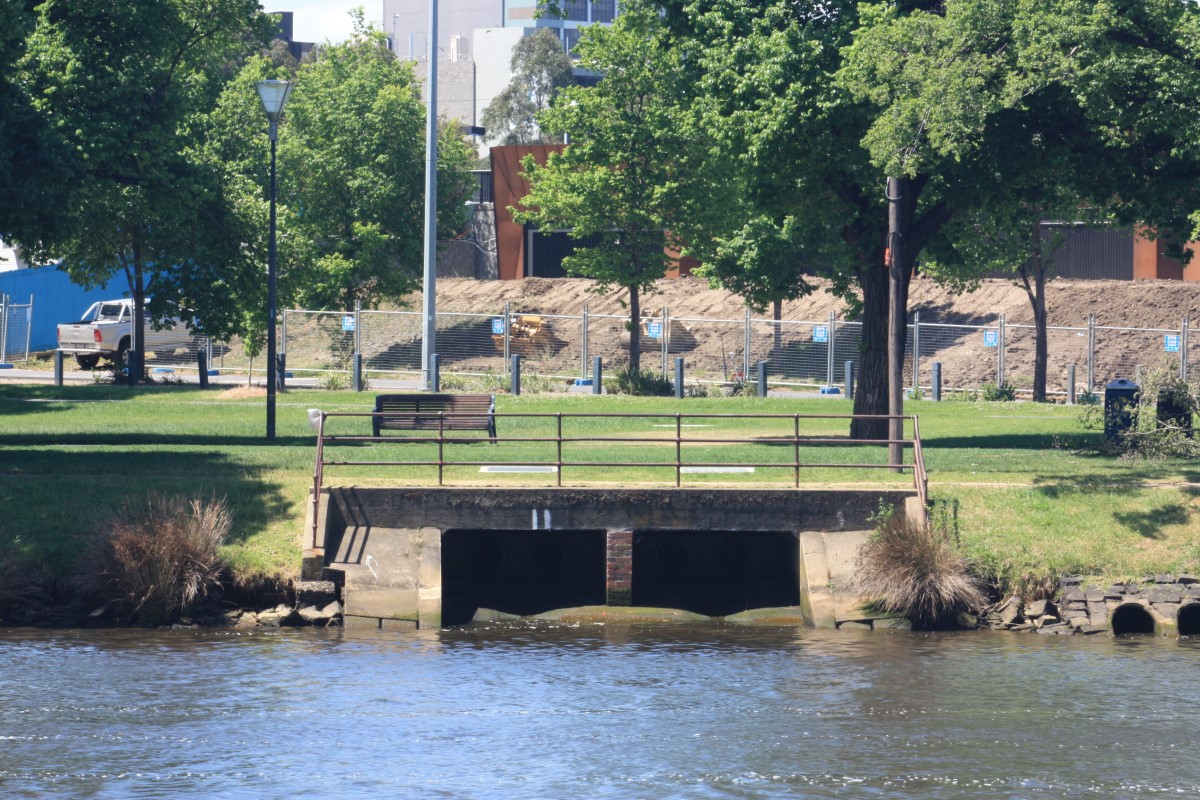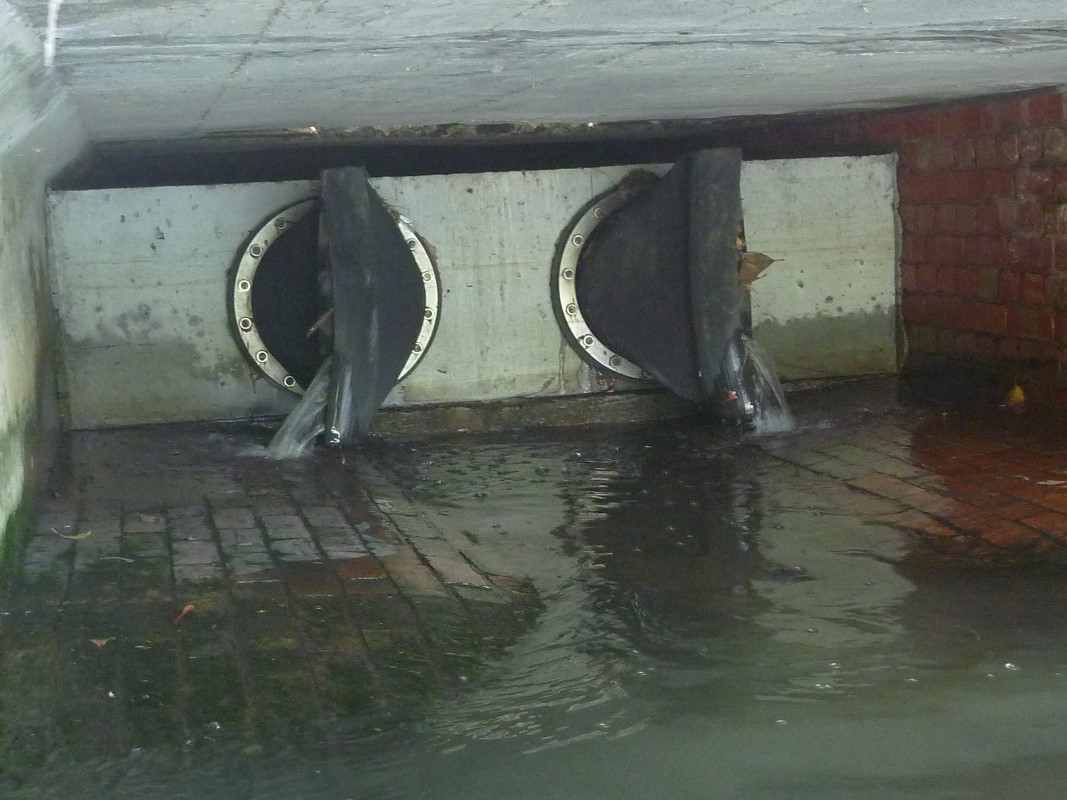You are standing on the Upper Terrace, looking at the biofilter. Beneath the flat lawn is the dual tank system. This is made up of two tanks. Dirty stormwater is pumped from the lower terrace and stored in the primary tank. From here, it is pumped up to the biofilter, where it soaks through the plants and soil to become clean. The clean water flows back underground to the second tank, where it is stored until it is needed to irrigate the gardens.
The dual tank system is about 54 metres long by 20 metres wide and is made of concrete that was poured on site. The soil beneath the tank is Coode Island silt, which has a tendency to settle over time. The concrete tank is able to withstand slight shifting without membrane breakages. In total, the tanks hold 2.5 million litres of water.
You will have noticed that the tanks are located a long way from the diversion point (stop 2). It is not ideal to have the tanks so far from the diversion point (on the lower terrace), but the constraints of the site limited the possible locations. The top of the tanks are about 4 metres below the surface of the lawn.
The biofilter is one of the only parts of the system that can be seen above-ground and is the main treatment process in the stormwater harvesting system. As the stormwater soaks through the garden bed, nutrients are removed from the water.
How it works:
The biofiltration bed is constructed in the same way as a typical raingarden. It has sand filtration, transition and drainage layers, and is planted with wetland grasses. Unlike a normal raingarden, the biofiltration bed is surrounded by a one metre tall retaining wall. It is periodically flooded with untreated water from the primary storage tank, which is cleaned as it gradually soaks down through the substrate. The specially designed substrate layers and biofilm growing on the roots of the plants naturally remove nutrients, such as nitrogen and phosphorus from the water.
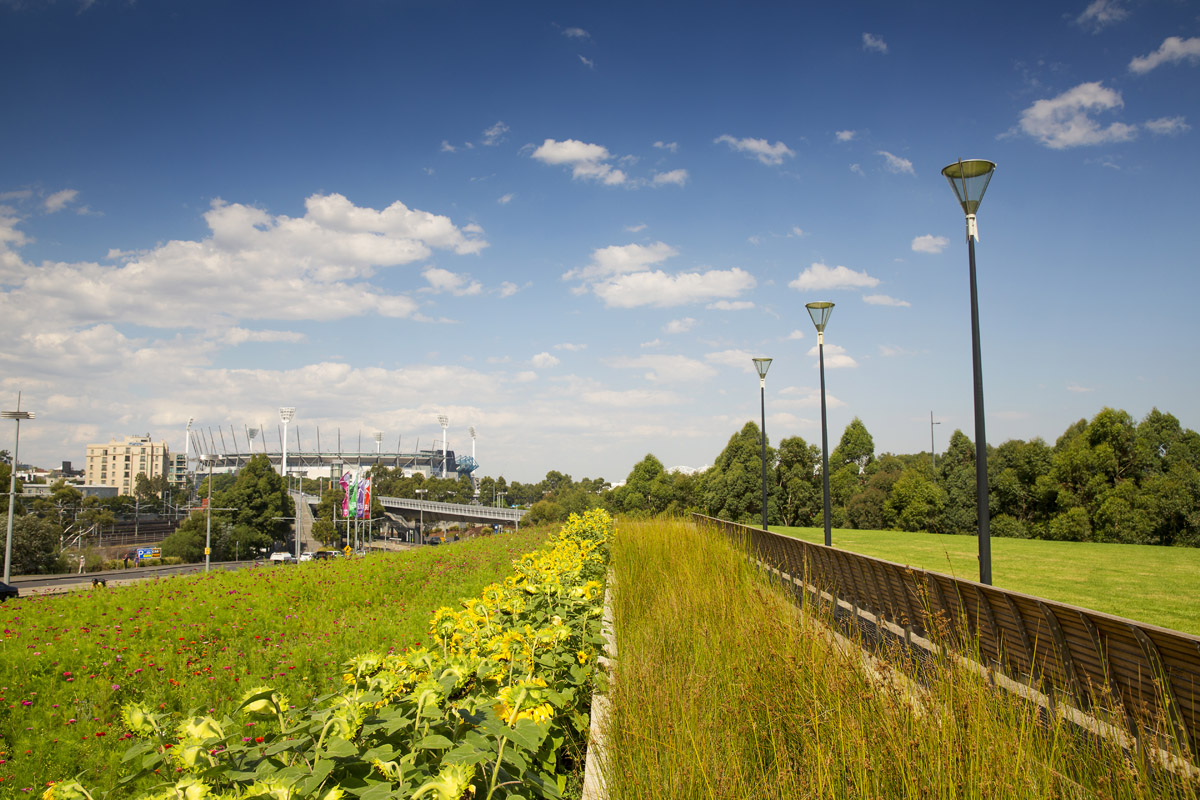
The flooding and resting cycle time is based on how long it takes for the water to soak through the substrate layers. This, in turn, is determined by the hydraulic conductivity of the filter media. The cycle time is pre-set. It is adjusted over time as the filter medium clogs and increases the detention time. Replacing the top of the filter media on an annual basis helps renew the conductivity.
The clean water drains naturally to the secondary tank where it is stored for irrigation.
You have completed the tour!
